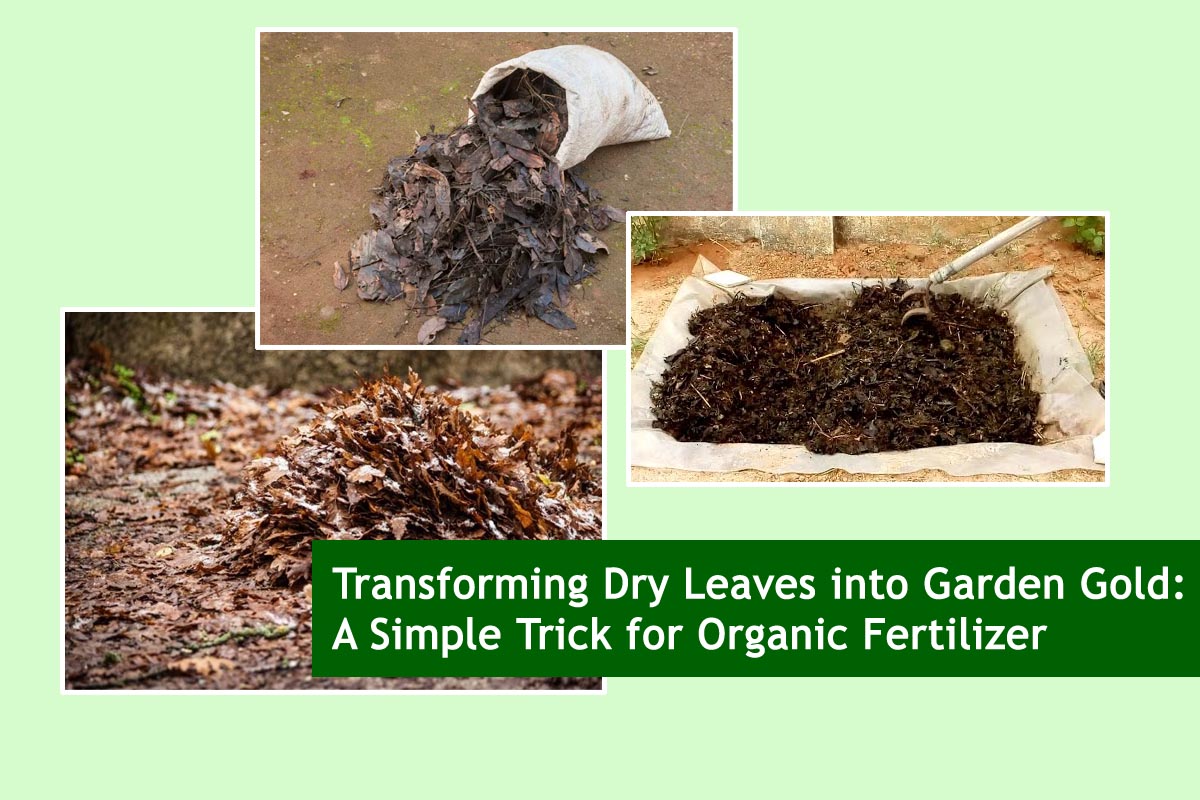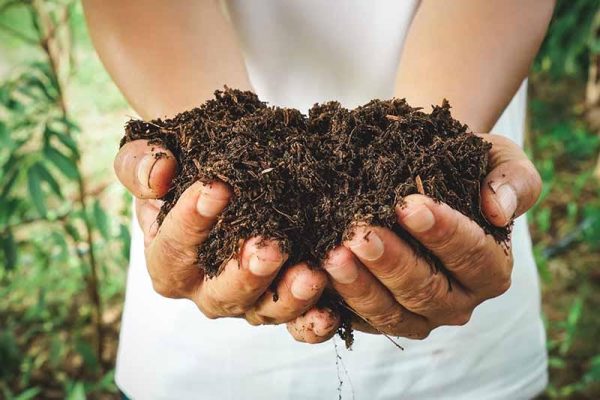
Transforming Dry Leaves into Garden Gold: A Simple Trick for Organic Fertilizer
In the world of gardening, one person’s trash is truly another person’s treasure. Take a look around your yard, and you might find a bounty of dry leaves scattered everywhere. Before you dismiss them as mere autumn debris, consider this simple yet effective trick to transform those dry leaves into garden gold: creating your organic fertilizer.
Often, we are advised to use organic fertilizers in our gardens. Everywhere you turn, you hear that organic fertilizer is the best for our plants.
However, organic fertilizers can be expensive at times. In this post, we are going to share a method with you through which you can prepare organic fertilizer using the dry leaves lying around, saving you money and benefiting your garden.
Compost made from dry leaves is highly effective and provides essential nutrients for plant growth. Let’s learn how to prepare this compost:
The Hidden Potential of Dry Leaves
Dry leaves may seem like a nuisance to some, but for the savvy gardener, they hold a wealth of nutrients waiting to be unlocked. These leaves, often seen as a hassle to clean up, can be repurposed into a valuable resource that nourishes your garden and promotes plant health.

Also Read This : Matchstick Magic: Unlocking Garden Growth with This Surprising Technique
The Simple Trick
Turning dry leaves into organic fertilizer doesn’t require fancy equipment or a green thumb. All you need is a little time, a designated space, and a bit of patience. Here’s a step-by-step guide to get you started:
Gather Your Dry Leaves:
Collect the dry leaves from your yard, making sure they are free of any pesticides or chemicals.
Also Read This : Bring the Outdoors In: Easy-to-Plant Indoor Trees That Thrive at Home
Create a Compost Pile:
Find a suitable spot in your garden or use a compost bin to create a dedicated space for your organic fertilizer project.
Layer and Mix:
Alternate layers of dry leaves with other kitchen scraps, such as fruit and vegetable peels, coffee grounds, and eggshells. This diversity ensures a balanced mix of nutrients.
Also Read This : Sandy Soil Marvels: Unveiling India’s Top 10 Resilient Plants
Turn Regularly:
Every few weeks, turn the compost pile to aerate it. This helps speed up the decomposition process and prevents unpleasant odours.
Be Patient:
Allow the compost pile to break down over time. Patience is key, as the magic happens gradually.
Also Read This : Avoiding a Common Mistake: Preventing Newly Purchased Green Plants from Drying Up at Home
Benefits of Homemade Organic Fertilizer

Cost-Effective: Save money by utilizing free resources from your backyard.
Environmentally Friendly: Reduce waste and create a sustainable gardening practice by repurposing organic matter.
Nutrient-rich soil: The resulting compost is a nutrient powerhouse, enriching your soil and providing essential elements for plant growth.
Improved Soil Structure: Compost helps enhance soil structure, promoting better water retention and drainage.
Reduced Need for Chemical Fertilizers: Embrace a natural approach to gardening, minimizing the use of synthetic fertilizers that may harm the environment.
Also Read This : Exploring Garden Containers: A Guide to Types, Pros, and Cons
Next time you find yourself surrounded by dry leaves, don’t view them as a chore. Instead, see the potential for garden gold. With a simple composting trick, you can turn those seemingly useless leaves into a valuable, nutrient-rich organic fertilizer. Your garden will thank you for it, and you’ll enjoy the satisfaction of a sustainable and eco-friendly approach to gardening.




